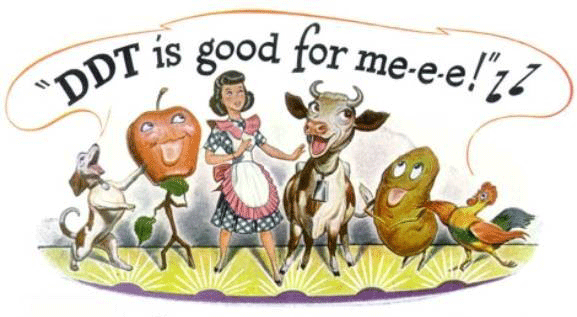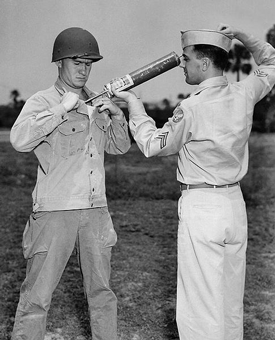“Silent Spring Turns” 50
Air Date: Week of September 21, 2012

Rachel Carson's legacy includes the ban on pesticides like DDT in the United States but a cocktail of other dangerous chemicals is still in use. Frank Graham is an editor with the Audubon Society and author of a follow up to Carson’s work“Since Silent Spring”. Graham talks to host Steve Curwood about the use of pesticides in the US then and now.
Transcript
CURWOOD: Well, it's hard to exaggerate how influential Silent Spring has proved to be in the half century since it was published. With Rachel Carson’s death so soon after publication, her editors had to look to someone else to write a follow up in 1970, and that man was Frank Graham.
Frank Graham has been the field editor for the Audubon Magazine for the last 40 years and in a volume called Since Silent Spring he documents how pesticide legislation changed in the wake of Rachel Carson’s work. He joins us now on the line to recall those times - welcome to Living on Earth!
GRAHAM: Nice to be here Steve!
CURWOOD: How widely used were chemicals like DDT back in the 1940s and 50s, before Rachel Carson published Silent Spring?

An advertisement for DDT reads “DDT kills … destructive pests and is a benefactor of all humanity.”
GRAHAM: The use was not only on farms, but I think what began to get people very much concerned about it, was the fact that it was also in the towns and neighborhoods. There used to be these spray trucks that would come around especially with the onset of the Dutch Elm disease and other problems with leaf eating insects.
And these trucks would come along and you could see children following the spray trucks down the street, it was kind of like seeing the fire engines come into your neighborhoods. So, everything was being drenched with it. People on University campus would see and would notice that birds were practically just dropping out of the trees dead.
CURWOOD: So, in the US, how would you say that pesticide use has changed since Rachel Carson’s book came out?
GRAHAM: Pesticide use has increased. Of course, since her time, there are more people in the world, there are more areas to use pesticides in. I think we use over a billion pounds a year in the US alone. We all have small amounts of pesticides in our bodies, much research has suggested that there might be, for instance, long-term reproductive effects in males of the human species. And there are enough warning signs going up that there are perhaps lots of problems ahead of us.
CURWOOD: So what do you think needs to happen now in terms of pesticide use?
GRAHAM: One of the interesting things about Carson’s book was that in the end she had a chapter on “Taking the Other Road” in which she investigated, seriously, alternatives to pesticide use. And I think in recent years a lot of that has been attempted and done with a considerable amount of success in some areas, for instance, under the name integrated pest management, where pesticides are used to some extent but in much lower doses than were used originally, but with other techniques such as predator insects or parasites against the pest organisms.
CURWOOD: So, when Silent Spring came out, is it fair to say that it was the first hard look at these chemicals and their potential dangers for the public?

DDT was widely sprayed on soldiers in World War II. (Wikimedia Commons)
GRAHAM: Yes it was. Most people were completely, I think, unaware of that. Almost all of the other materials that they came up with before that was positive about DDT and some of those other chemicals. So, what Carson’s idea was just to… she began to hear stories, and she went around and talk to other scientists and so on - and no one was really willing to stick their neck out.
She did not want to write this book herself. She was a very private person, she knew that the consequences would be a serious attack on her. She actually spoke to several other people trying to get them to write the book, but no one else was either qualified or willing to take it on.
CURWOOD: It almost goes without saying that Rachel Carson’s book did not cheer the chemical industry.
GRAHAM: No, it was a rather serious attack against them.
CURWOOD: What kinds of things did they do and say?
GRAHAM: Well, there was a tremendous public relations attack on Carson. She was accused of hysteria… of being a sort of ‘high priestess of nature,’ she was called. I think she was ridiculed also as a woman - you know, sticking her nose into some area where she wasn't really invited.
I remember at a federal meeting, one of the entomologists got up and said, ‘Rachel Carson should not be concerned about something like this - after all, she’s a spinster, so these genetics don’t concern her.’ The reproductive losses and so on. There was a lot of snide and actually vicious comments - they called her all kinds of names, including, I think the most scathing one was that she was a ‘bird watcher.’
CURWOOD: Oh my!
GRAHAM: So…
CURWOOD: We know about them, don’t we?
GRAHAM: (Laughs.) We do!
CURWOOD: Today we hear a lot about scientists feeling intimidated by industries that don’t like their results. How do you think the atmosphere for scientists today compared to what Rachel Carson encountered 50 years ago?
GRAHAM: Well, I think there’s a peculiar sameness about. I know that there are several scientists who’ve done studies on the global climate change have come under severe attack from a lot of these people. One man apparently had somebody who laid a dead rat, on his doorstep and things like that. They’ve come under a lot of pressure.
CURWOOD: So how do you sum up the importance of Rachel Carson’s Silent Spring for the environmental movement for this nation?
GRAHAM: I think that it had a great effect on some areas, perhaps beyond pesticides. It made people aware of air pollution, water pollution. I think it certainly led to the creation of the EPA and other agencies like that - it just opened up the whole issue of pollution.
CURWOOD: Frank Graham is an editor of the Audubon Society and wrote the follow-up to Rachel Carson’s work entitled “Since Silent Spring.” Thanks so much, Frank, for taking this time.
GRAHAM: OK, Thank you, Steve!
Links
An article by Frank Graham in Yale Environment 360 about the ongoing assault of science
Living on Earth wants to hear from you!
Living on Earth
62 Calef Highway, Suite 212
Lee, NH 03861
Telephone: 617-287-4121
E-mail: comments@loe.org
Newsletter [Click here]
Donate to Living on Earth!
Living on Earth is an independent media program and relies entirely on contributions from listeners and institutions supporting public service. Please donate now to preserve an independent environmental voice.
NewsletterLiving on Earth offers a weekly delivery of the show's rundown to your mailbox. Sign up for our newsletter today!
 Sailors For The Sea: Be the change you want to sea.
Sailors For The Sea: Be the change you want to sea.
 The Grantham Foundation for the Protection of the Environment: Committed to protecting and improving the health of the global environment.
The Grantham Foundation for the Protection of the Environment: Committed to protecting and improving the health of the global environment.
 Contribute to Living on Earth and receive, as our gift to you, an archival print of one of Mark Seth Lender's extraordinary wildlife photographs. Follow the link to see Mark's current collection of photographs.
Contribute to Living on Earth and receive, as our gift to you, an archival print of one of Mark Seth Lender's extraordinary wildlife photographs. Follow the link to see Mark's current collection of photographs.
 Buy a signed copy of Mark Seth Lender's book Smeagull the Seagull & support Living on Earth
Buy a signed copy of Mark Seth Lender's book Smeagull the Seagull & support Living on Earth

